Birds use a variety of tactics to deal with the harsh conditions presented by an unusually cold and snowy winter. Some are more effective than others. I thought it might be interesting to see a few of them that I’ve been able to photograph in the last several weeks.
My usual disclaimer for posts relating to behaviors; many of these images are technically lacking but I think they do illustrate some of the conditions these birds are having to cope with.
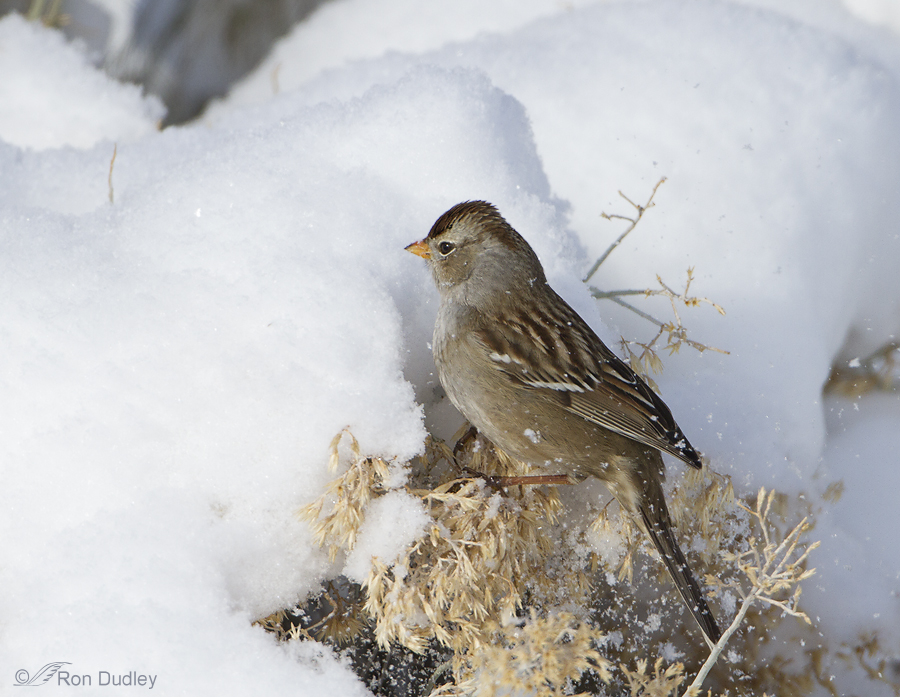
1/2500, f/6.3, ISO 640, 500 f/4, 1.4 tc, natural light
After a fresh snow, the food source for many small birds is largely hidden and unavailable without some extraordinary measures. This juvenile White-crowned Sparrow, and others in the flock, were flitting from one snow-covered perch to another in an obvious attempt at knocking the snow off so they could get to the seeds underneath. Here you can see the snow falling away and immediately afterward the sparrow fed on the uncovered seeds.
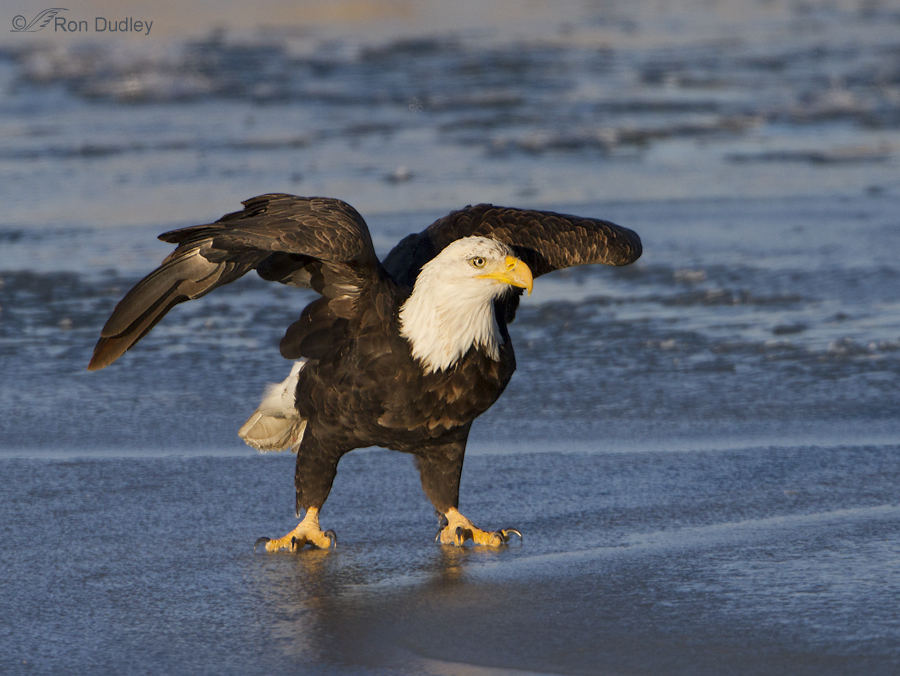
1/2500, f/7.1, ISO 500, 500 f/4, 1.4 tc, natural light, not baited, set up or called in
When it gets very cold most water sources freeze up completely which makes fish largely inacessable to Bald Eagles so many of them turn to scavenging as their primary food source. But this species adapted very well to scavenging eons ago which is one of the reasons Ben Franklin looked in disfavor at the proposal to make the Bald Eagle our national bird.
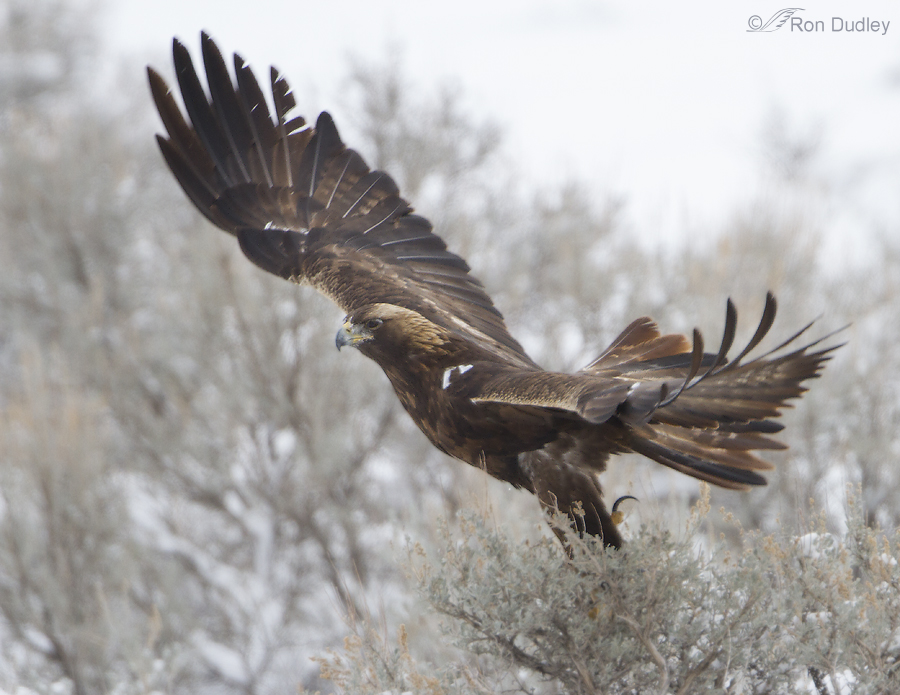
1/1000, f/5.6, ISO 640, 500 f/4, 1.4 tc, natural light, not baited, set up or called in
Golden Eagles are occasionally found on the island but they generally avoid people and hang out in the more remote and inaccessible areas. One of their primary food sources is rabbits and the highest concentration of them seems to be in the sagebrush covered areas on the north end of the island near the campgrounds and park buildings. Until a few days ago, after a storm, I had never seen a Golden Eagle anywhere near those buildings (and seldom on the north end of the island) but this one had apparently been hunting rabbits in the area and decided to risk humans in close proximity.
The light was poor and the bird isn’t very sharp but I decided to include the shot to illustrate the apparent change in hunting behavior (near human habitation). This eagle was taking off from a sagebrush perch within a stone’s throw of those buildings. There were many rabbits in the immediate area.
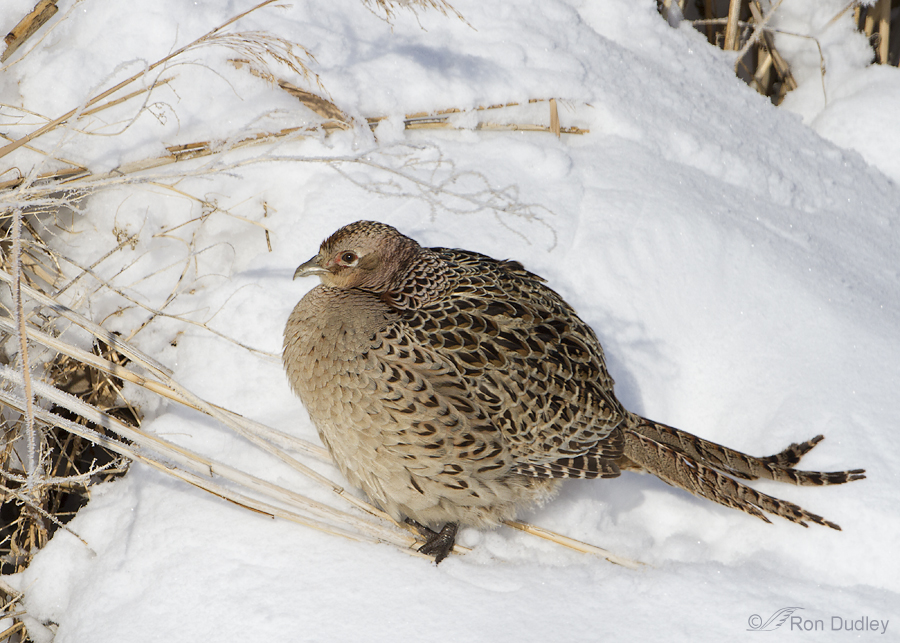
1/3200, f/8, ISO 500, 500 f/4, natural light
Ring-necked Pheasants are heavy-bodied birds that sink deeply into Utah’s famous powder snow. This resting female was using bent-over reeds as “snowshoes” to keep her from sinking into the deep snow.
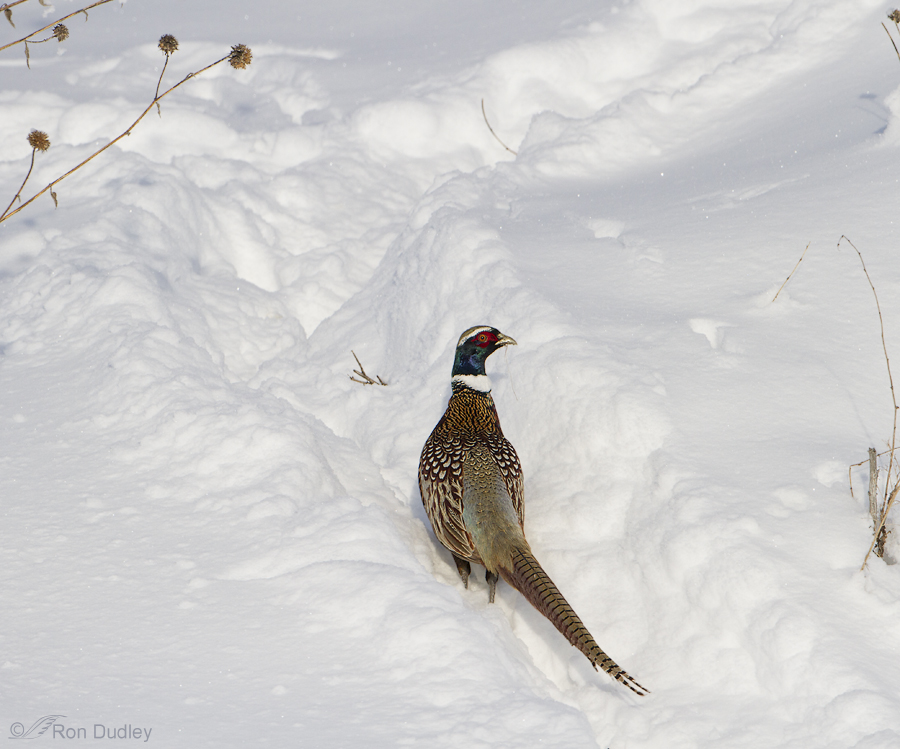
1/4000, f/6.3, ISO 500, 500 f/4, natural light
In one area of Farmington Bay WMA with a high concentration of pheasants there’s only a single source of unfrozen water where it trickles out of a culvert in a deep ditch. To get to it the pheasants have literally plowed a path through the snow and down the steep bank to the water source. Many pheasants continually use this path.
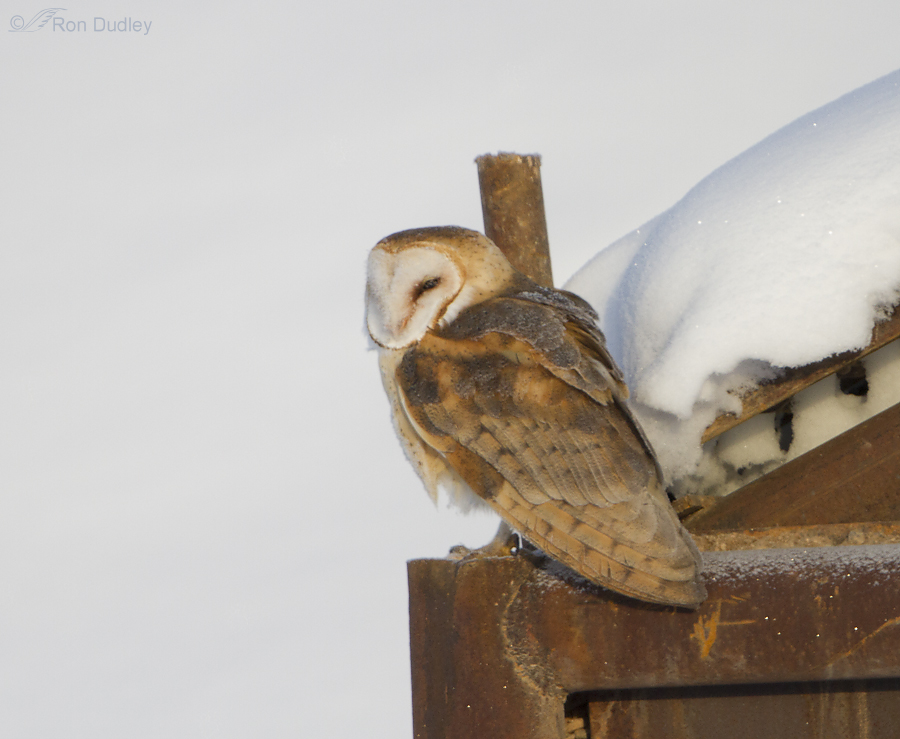
1/1600, f/5.6, ISO 800, 500 f/4, 1.4 tc, natural light, not baited, set up or called in
Recently I mentioned in a comment that I had seen a Barn Owl shivering in the cold. This is that bird, perched on a rusty metal piece of construction equipment. It was classic shivering, just like humans do. The birds entire body would shake for a few seconds and then stop but the cycle went on continually while this owl was perched here. Since that day I’ve seen another Barn Owl shivering. Shivering consumes calories and energy but it also produces body heat.
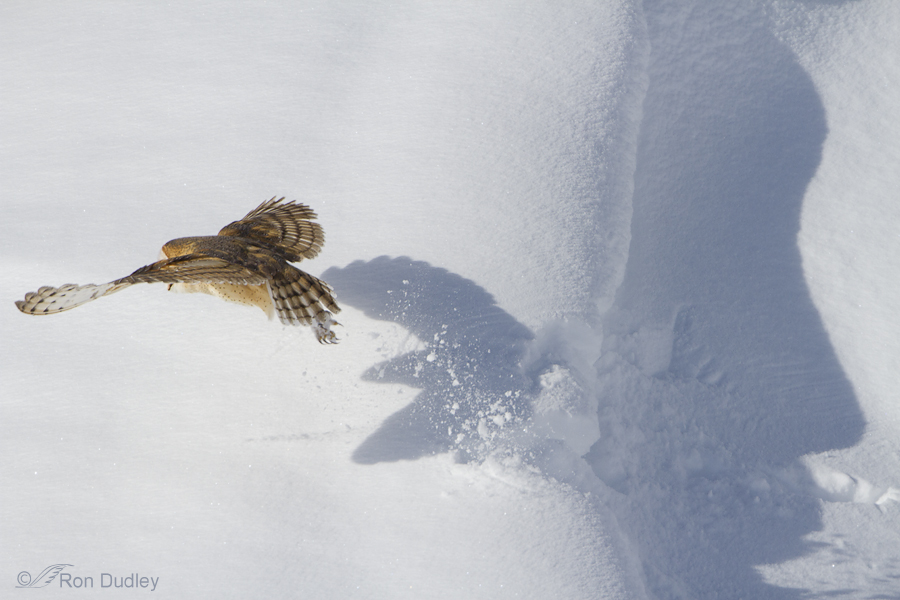
1/4000, f/7.1, ISO 500, 500 f/4, 1.4 tc, natural light, not baited, set up or called in
Deep snow is challenging for birds in a variety of ways. This Barn Owl had attempted to land on this snow cornice on the side of a steep hill, apparently thinking it would be a stable perch. It wasn’t. The bird immediately sank into the powder so it almost immediately took off again. The image breaks all of the composition rules and the birds face is hidden by the wing but I thought it demonstrated one of the difficulties these birds face in these conditions.
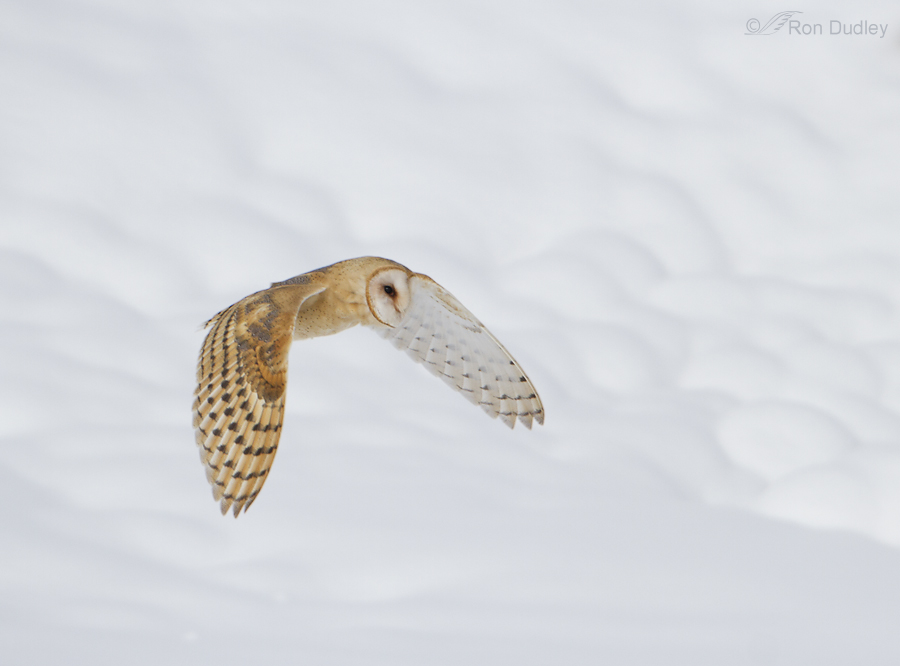
1/2500, f/6.3, ISO 500, 500 f/4, 1.4 tc, natural light, not baited, set up or called in
Imagine trying to survive by hunting voles in a landscape such as this when virtually everything is covered by 16″ of deep snow, including your food. The refuge manager recently told me that while out mowing down the invasive Phragmites in the marshes he had flushed up about 15 owls in one day. His parting comment was “I wonder if the Barn Owls have started dying yet”.

1/2500, f/7.1, ISO 800, 500 f/4, 1.4 tc, natural light
Three days ago we spotted this Black-crowned Night Heron in an inaccessible area on the far side of a small pond. I can’t tell for sure but it looks to me like the bird might be frozen into the ice with one of its feet on top of it. If so, I hope the bird had a quick demise.
It’s a tough old world out there, for the birds and for other creatures too. Many adapt and survive, sometimes using almost ingenious methods, while others don’t make it. The age-old story of survival.
Ron


trés trés belles photos et merveilleux commentaires
,J’AIME
Nice compilation of stories, it sure is exciting to read your entries.
Thank you. Informative and beautiful. I am always amazed at survival techniques. During our seven year drought we saw birds that normally avoid people in the suburbs. The drought broke, and they returned to their mountain habitats. Which is as it should be.
Your barn owl photo, while unconventional, certainly met the ‘every picture tells 1000 words’ criterion.
Excellent photography…excellent storyline. Your journalistic approach to the plight of wintering birds does them a valuable service.
Thank you, Howard. I’m glad you appreciate the “journalistic approach”, though I’m thinking I need to modify the focus of some of my recent blog posts to more uplifting topics. Too depressing…
I, too, find the pic of the barn owl lifting off from the snow bank to be beautiful. There are three owls in the pic, the impression left in the snow, the shadow and the bird itself. Another good story in one image.
Good, Tana. I’m happy to hear that several readers like that shot. I did too, but it’s so unconventional I figured I might be the Lone Ranger on that one.
I am brand new to your blog and enjoying it very much.
The pictures are outstanding and your comentary adds so much.
Welcome, Len – and thank you for the kind words.
It’s funny but the shadow on the snow bank of the owl taking off ,shot from above ,looks like one of those Easter Island statues. It looks away indifferent to the owls struggle to survive.
I had the same “Easter Island” thought about that shadow, Eldridge – almost mentioned it in my text.
Love both your wonderful shots and the commentary. A feast for the eye and alike.
Thanks very much, Charlotte.
Thank you Ron for the different examples of survival techniques .I think the image of the barn owl lifting off from the deep snow is beautiful( the shape of the wings, the shadow, and the spray of snow tells the story,without seeing the owl’s face) with it’s unconventional diagonal composition. Hope the cold spell is breaking for you and all the fauna out there.
Thanks, John. I liked that image too, despite its unconventions. It’s full frame as I presented it.